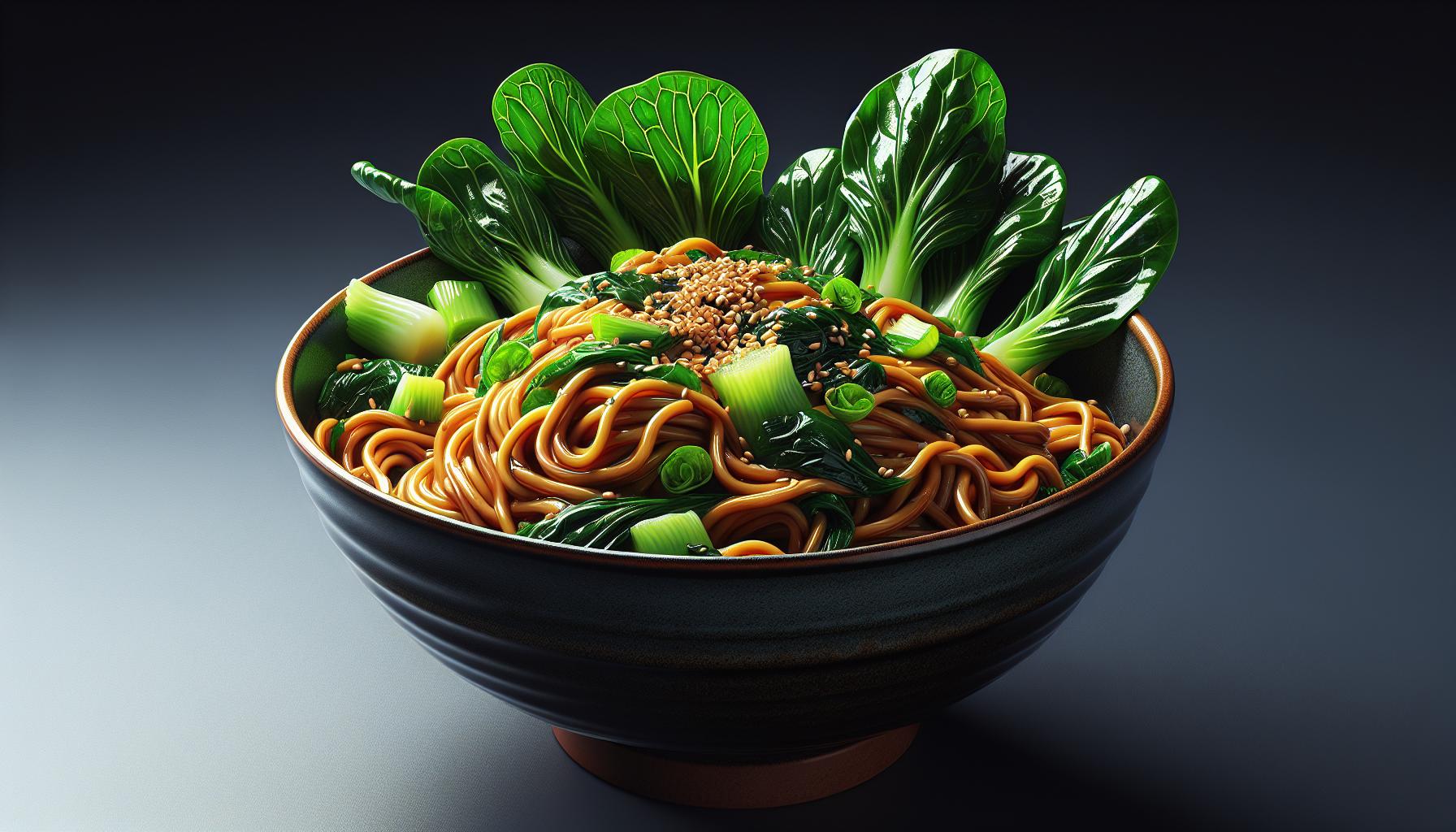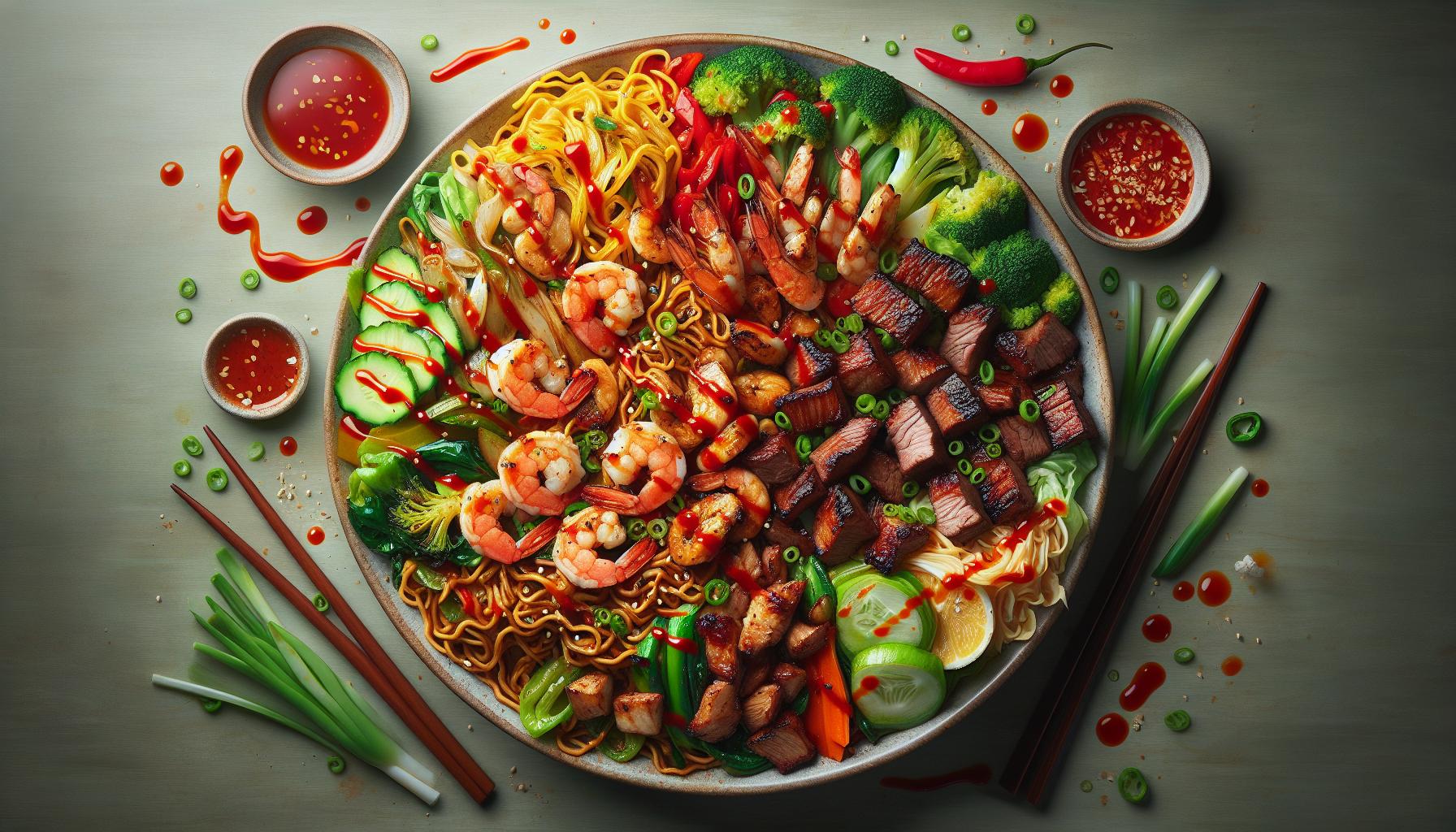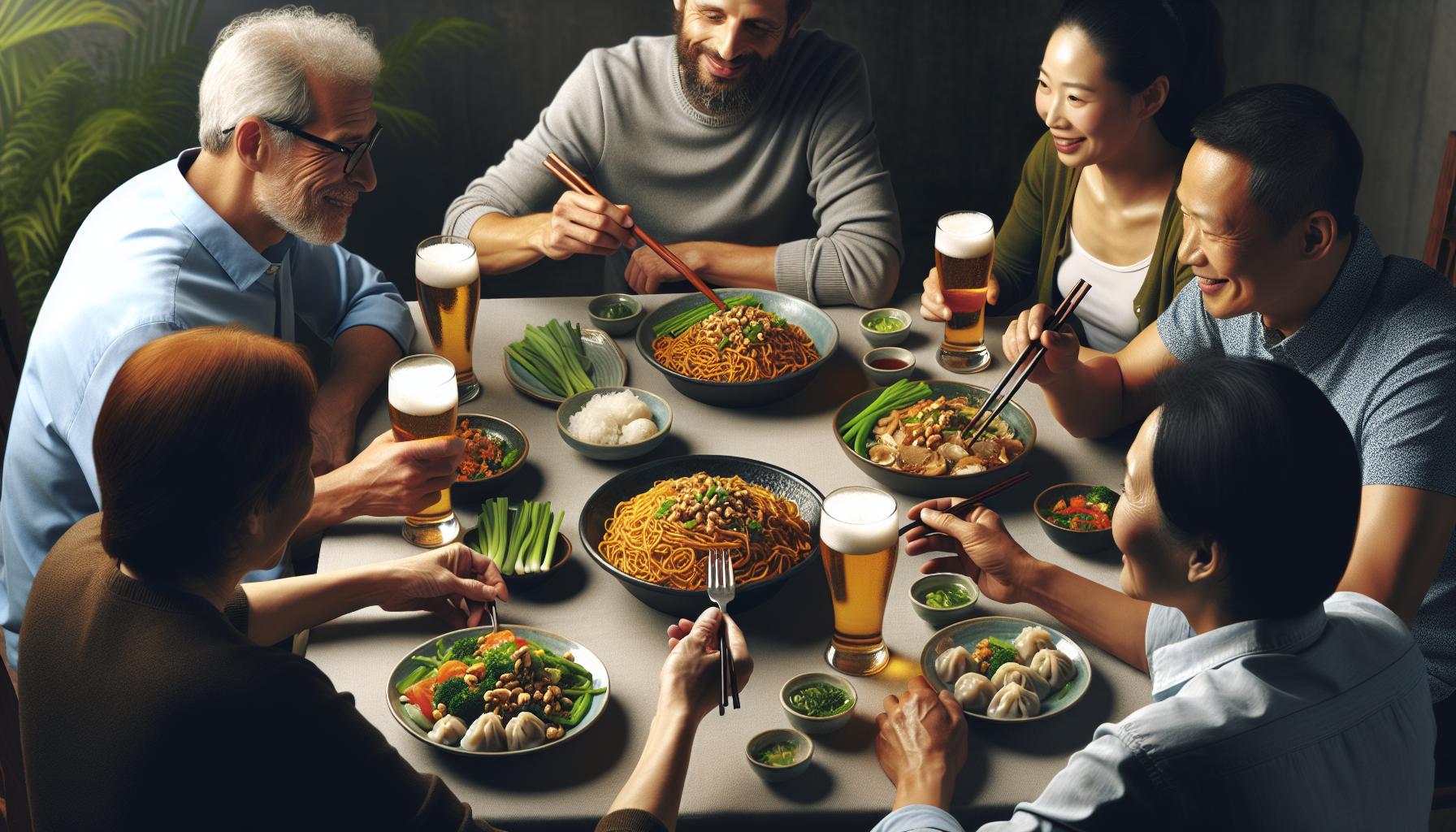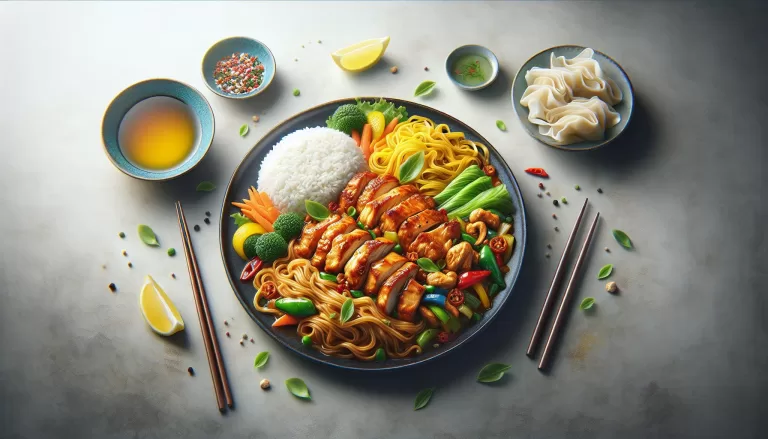Easy and Flavorful Homemade Shanghai Fried Noodles Recipe

Ingredients for Homemade Shanghai Fried Noodles
Let’s dive into assembling the ingredients for this delightful dish. Remarkably, you won’t need a chef’s hat or a trip to an exotic food market. Most of these ingredients can be found in your local grocery store.
You’ll find the primary ingredient of this dish is noodles. Specifically, opt for Shanghai-style wheat noodles. If they aren’t handy, soba or even spaghetti would do an excellent job.
For the meat part, boneless pork is traditionally used. Some use julienned chicken or beef as a delicious alternative. Tofu or mushrooms can satisfy any vegetarian taste bud.
Let’s not forget the vegetables! Bok choy brings a unique twist in taste and texture. For an extra kick, try adding bell peppers or snow peas. Don’t be afraid to experiment!
Chinese dark soy sauce, oyster sauce, and white pepper are for seasoning. This trio grants the dish its special taste. And, if you fancy a spicier kick, a dash of red pepper flakes or a dribble of chili oil will do the trick.
Here’s a quick rundown of your shopping list:
| Ingredient | Amount |
|---|---|
| Shanghai-style noodles | 200g |
| Boneless pork (or alternative) | 100g |
| Bok choy (or other veggies) | 2 cups |
| Dark soy sauce | 2 tablespoons |
| Oyster sauce | 1 tablespoon |
| White pepper | 1/2 teaspoon |
| Optional: red pepper flakes/chili oil | To taste |
Once you’ve gathered all your ingredients, you’re all set to take this culinary journey to Shanghai and impress your guests with your cooking.
Step-by-Step Instructions

To begin your culinary journey, let’s take a walk through the step-by-step process of making these authentic Shanghai Fried Noodles. Just remember, cooking is an art! Be patient and have fun as you go along.
Begin by marinating the proteins. Lightly season your choice of protein (be it boneless pork, chicken, tofu, or even mushrooms) with some salt, pepper, and a dash of dark soy sauce. A unique tip is to add a little bit of baking soda. It’s a secret weapon which keeps the meat tender and juicier!
While your protein is marinating, we’ll prepare the noodles. If you have fresh Shanghai-style noodles, perfect! If not, fret not! You can use udon, soba, or even spaghetti as alternatives. Boil them until al dente, strain, and set aside.
Now onto the veggies prep. While your traditional recipes call for bok choy and bell peppers, you can also include broccoli, snap peas, or carrots for an extra crunch. For added heat and flavor, try throwing in some sriracha or crushed red pepper flakes.
And then comes the stir fry. Heat up some vegetable oil in a large wok, toss in your marinated protein and stir fry until nicely browned. Remove and set aside. In the same wok, stir fry your prepped veggies till they are tender yet crunchy. It’s all about balancing the textures!
Lastly, it’s time to combine everything. Toss your cooked noodles into the wok with veggies. Splash in the oyster sauce, dark soy sauce along with white pepper, and blend them well. Evenly distribute the seasoning without mashing up the noodles. Add your cooked protein and, voila! Your yummy Shanghai fried noodles are ready.
Similarly, don’t shy away from personalizing this recipe. Experiment with the ingredients and tweak the seasoning till it suits your palate. You never know, you might invent a masterpiece!
Here is a quick nutrition fact-check for a single serving of Shanghai Fried Noodles:
| Nutrition | Value |
|---|---|
| Calories | 325 |
| Carbs | 50g |
| Proteins | 20g |
| Fats | 10g |
Tips for the Perfect Shanghai Fried Noodles

Personalization is key. Indeed, it’s your kitchen and your ultimate dish. So go ahead and customize it! If you want a little spice, sriracha, red pepper flakes or chili oil could do the trick. Prefer it rich and hearty? Consider adding more protein or even some comforting ingredients, such as mushrooms or baby corn.
Patience is your magic ingredient. It may be tempting to crank up the heat and rush the cooking but remember, great flavors take time to develop. The benefit of stir-frying is not only the delectable flavors it imparts but also the method’s ability to retain the nutrients in our food, which are often lost in high-heat cooking methods.
The secret weapon, baking soda. A little-known fact is that marinating your protein with a touch of baking soda can make it tender and juicy. Have you ever wondered why restaurant-style noodles have that certain tenderness that’s hard to replicate at home? Here’s your answer.
Let’s talk nutrition. This comforting dish has a nutritiously balanced profile. For approximately a single serving portion,
| Nutritional Components | Amount |
|---|---|
| Calories | 500 |
| Carbohydrates | 65g |
| Proteins | 30g |
| Fats | 20g |
Keep these values in mind if you’re monitoring your intake.
To make the noodles extra special, consider perfecting the al dente. The ideal texture of Shanghai noodles strikes a balance between tenderness and a chewy bite.
Variations to Try

Let’s spice things up and make your dish stand out. Yes, you can customize your Shanghai fried noodles with different twists and turns. The beauty of the home kitchen is the flexibility to tweak and tailor recipes to your palette.
Want more heat? Sriracha might be your secret weapon! It’s not just for drizzling over a finished dish. Adding a spoonful while stir-frying gives a spicy kick that’s hard to resist. Want more? Don’t be shy – you’re the chef here.
Stir-fries are known to be versatile. Along with your proteins, how about trying out additional proteins? Incorporate tofu for a plant-based protein punch. Salmon works wonders too, cutting through the richness of the dish and adding an element of surprise. Both are not common to Shanghai noodles but shine in the depths of its flavorful profile.
Slow cooking develops flavors, that’s a given. But have you tried marinating your proteins with baking soda? Sounds odd, you may think. Yet, marinating proteins in baking soda before cooking is a restaurant trick providing tender, juicy pieces every time.
Nutrition is key, especially in our health-conscious era. Playing around with whole grain noodles might make your dish more nutritious. It’s a small tweak in the recipe with considerable health benefits.
Let’s talk about texture. Al dente noodles are an art to perfect. Ever tried cooking your noodles just shy of “done” then finishing them in the sauce? Guarantee, that extra step takes the noodles to a different level.
Remember, cooking at home means breaking the rules. Trying out these tips, testing, and adjusting is the fun part. And you might just reinvent a classic.
Serving and Enjoying Your Shanghai Fried Noodles

Now that you’ve put time and effort into creating your delicious homemade Shanghai fried noodles, the moment of truth has arrived. Feast your eyes and treat your palate!
You might want to add variety to your dish with some vibrant, delicious toppings. Crushed peanuts for a crunchy contrast, scallions for a fresh touch, or sesame seeds for a nutty flavor can further enrich your meal.
You could also pair your Shanghai fried noodles with a complementary side dish. Steamed broccoli or bok choy, generously drizzled with sesame oil, adds a healthful note. How about pork dumplings or crispy spring rolls as an indulgent sidekick? These extra elements not only add another dimension to your meal, but also present the opportunity to prepare a balanced and nutrient-rich dinner.
Next, think about the ideal drink pairing. A cold Tsingtao beer can complement your spicy, rich noodles beautifully. If you aren’t keen on alcohol, freshly brewed jasmine or green tea can make a soothing accompaniment.
Lastly, gather your loved ones and enjoy. As you share this meal together, see their reactions unfold – the wide-eyed admiration, the moment of silent savoring, followed by the eager nods of approval. Remember, the greatest joy in cooking your very own Shanghai fried noodles isn’t just about the delicious outcomes that you’ve cooked up – it’s the moment when you’re able to share that joy with others.
Dining ought to be an immersive, holistic experience – not just ingesting food, but also relishing textures, flavors, and the company around the table. So despite the temptation to rush back to the kitchen for seconds, sit back, savor the meal, and take pleasure in the fruits of your efforts.
After all, the beauty of home cooking is its propensity to create memorable connections. Through your Shanghai fried noodles, you’re not just serving a meal – you’re serving happiness.
Conclusion
So, you’ve learned how to whip up a delicious plate of homemade Shanghai fried noodles. It’s not just about the cooking process, but also the joy of sharing and savoring this delightful meal with your loved ones. Remember, it’s the little extras like crushed peanuts, scallions, or sesame seeds that really elevate the flavors. Don’t forget to complement your noodles with side dishes and a suitable drink to create a well-rounded meal. Whether it’s steamed broccoli, pork dumplings, or a refreshing Tsingtao beer, it’s all about enhancing your dining experience. With this recipe, you’re not just serving food, you’re serving happiness and creating memorable connections. So go ahead, roll up your sleeves and bring Shanghai right into your kitchen!





